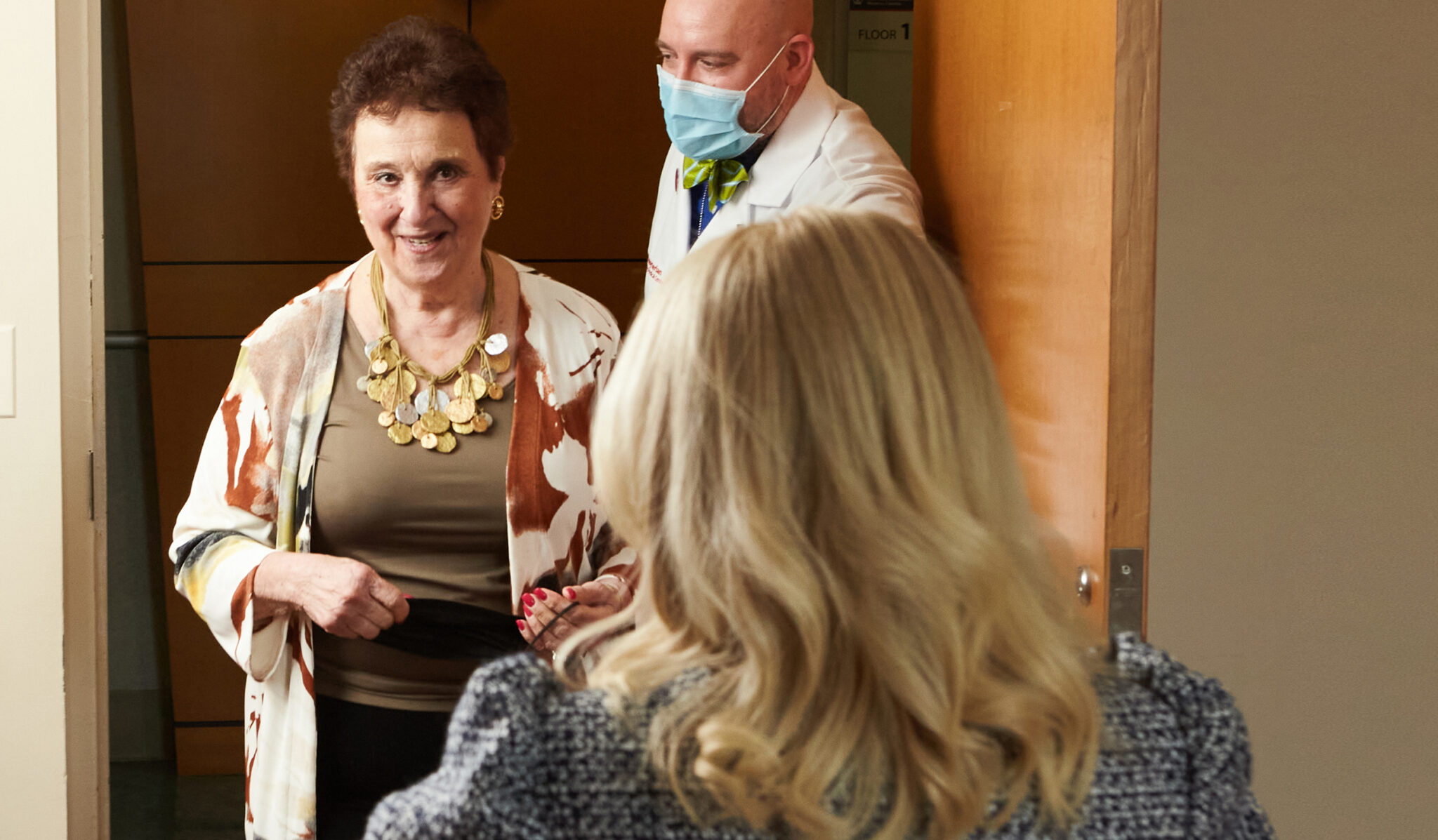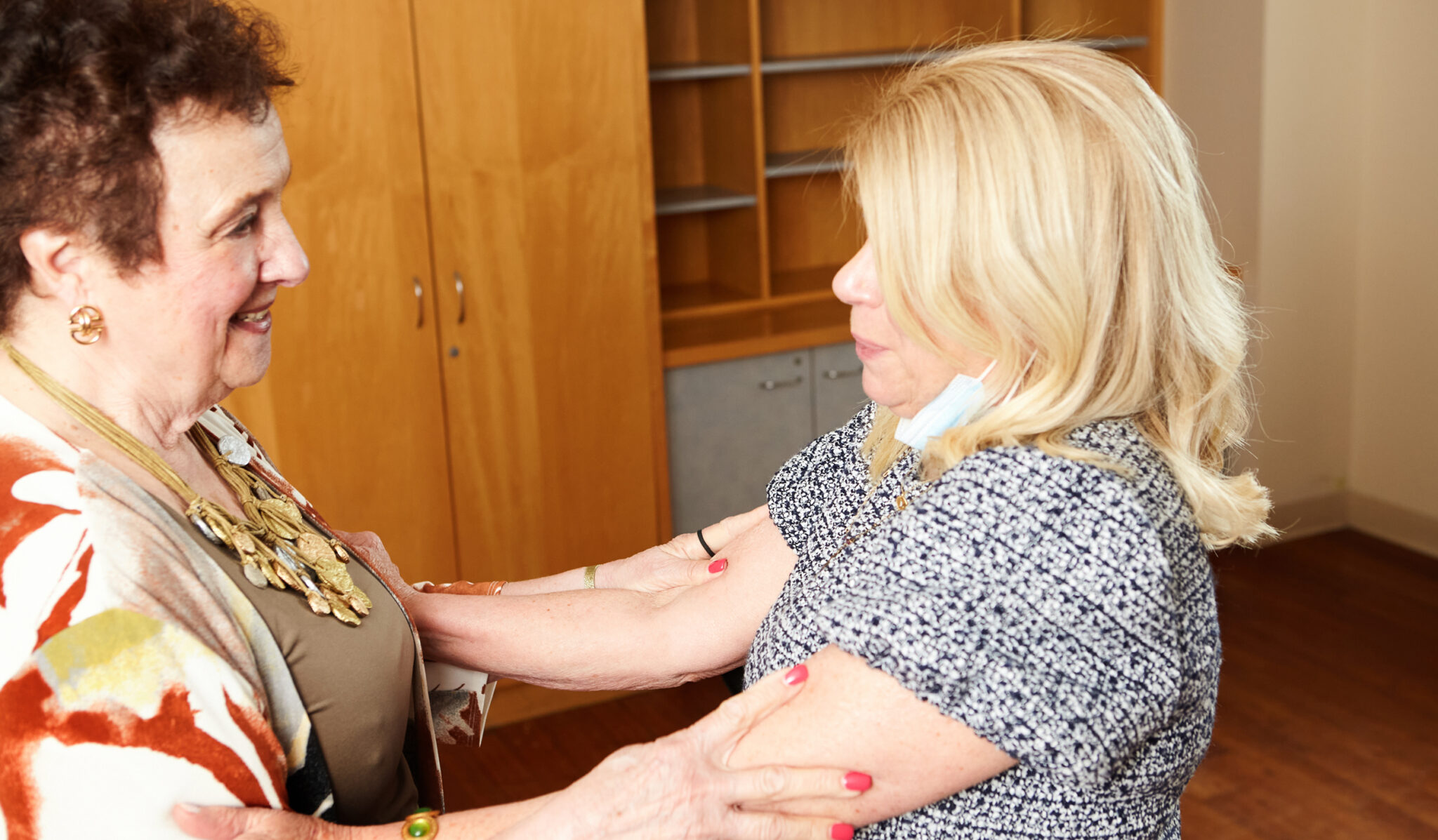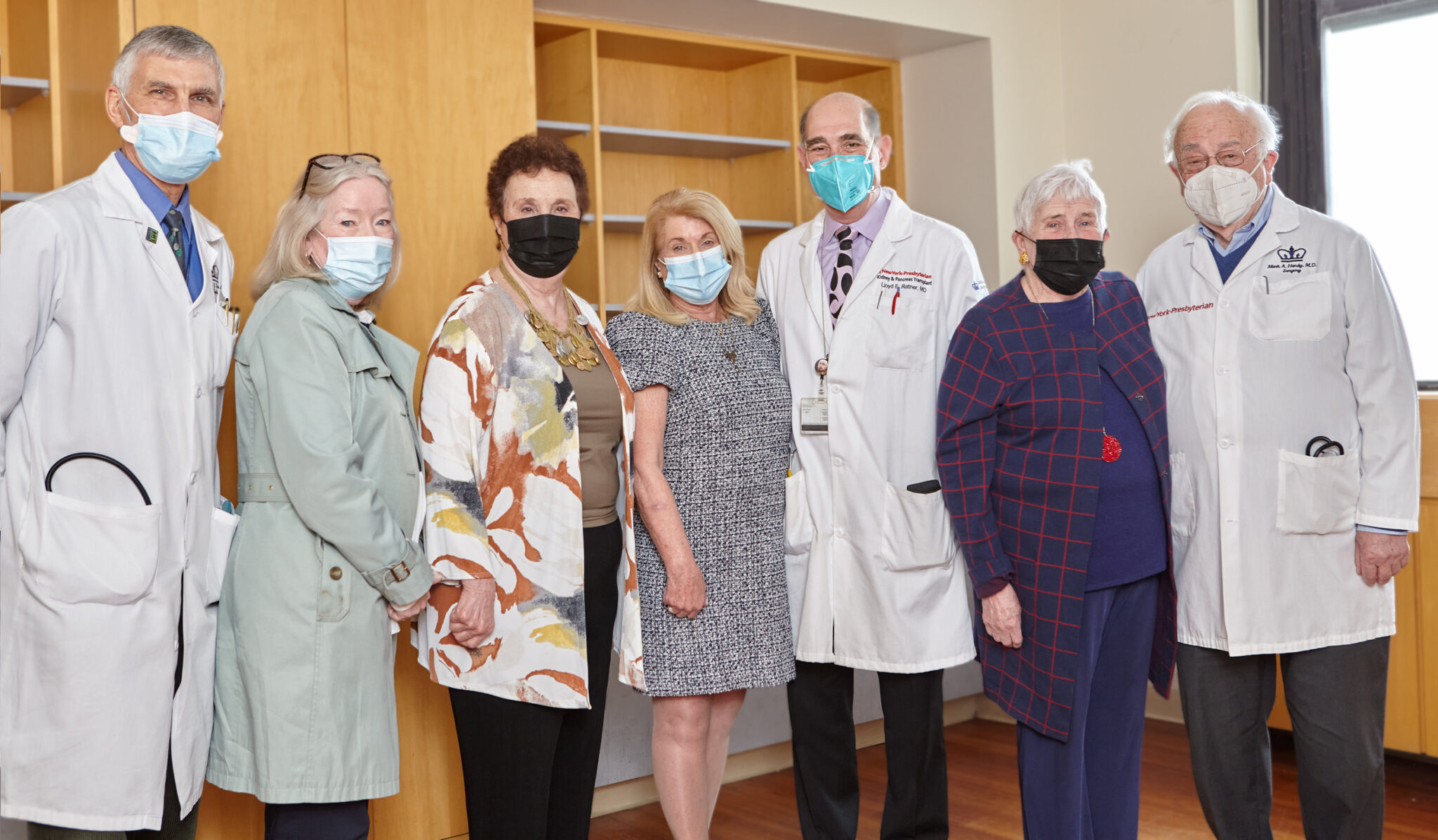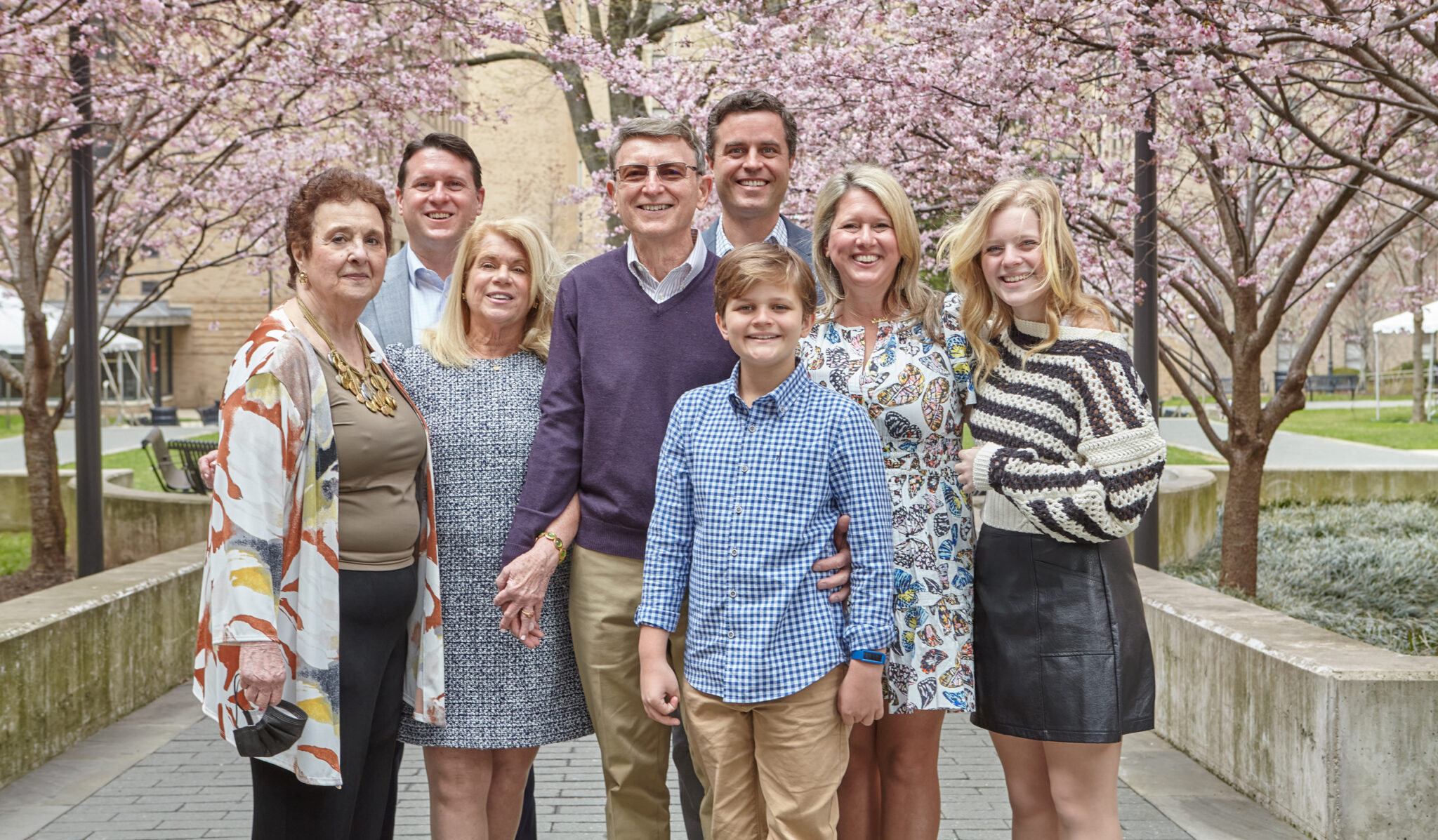A Sister’s Love and Legacy: Honoring a Kidney Donation After 50 Years
Jennifer Ruderman didn’t hesitate to donate a kidney to her sister, Melinda, in 1971. Now, 50 years later, she reflects on the impact of that life-changing transplant.


Jennifer Embree Ruderman traveled over 800 miles from her home in Atlanta, Georgia, to revisit the familiar grounds of NewYork-Presbyterian/Columbia University Irving Medical Center. She’d made this journey, alongside members of her family, for a very special reason: Jennifer wanted to honor the memory of her sister, Melinda, on the anniversary of what she calls “the best decision of my life.”
In 1971, at age 22, Jennifer donated a kidney to her younger sister, Melinda Embree, who had been diagnosed as a child with glomerulonephritis, a disease that injures the part of the kidney that filters blood.
Just a year before, NewYork-Presbyterian/Columbia University Irving Medical Center had begun performing living organ donor transplants. “My sister and I were young — and so was renal transplant surgery,” says Jennifer. “But I was given the chance to save Melinda’s life. And without hesitation, I took it.”
Jennifer’s gift extended Melinda’s life by 14 years, allowing Melinda to fulfill two of her dreams: pursuing a career as a dental hygienist, and camping across the continental United States.
To commemorate the 50th anniversary of the transplant, Jennifer returned to NewYork-Presbyterian, eager to visit the place that gave their family the opportunity for a new beginning. “Returning to learn about all the tremendous developments in organ transplants over the last five decades is very special to me,” says Jennifer.
A Life-Changing Decision
The Embrees’ long-standing relationship with NewYork-Presbyterian began in 1966, when 15-year-old Melinda began seeing a nephrologist at the hospital (then known as Columbia-Presbyterian Medical Center). By age 19, Melinda had learned that her kidneys were failing, and she started dialysis in 1970. Jennifer, then a college senior and the second-eldest of nine children from a tight-knit Long Island family, visited regularly.
“The first time I saw her on dialysis, instead of saying, ‘Hi, how are you?’ Melinda greeted me with, ‘Will you give me a kidney?’” recalls Jennifer.
“I heard the desperation. I knew I wanted to help, and I would do anything. I answered yes immediately.”

Melinda Embree at 16 (left); Jennifer Embree Ruderman at 21
‘A New Kind of Love’
On November 18, 1971, the Embree sisters underwent their transplant surgeries. And during their recoveries, Jennifer took comfort in the kindness of her care team. They supported the family every step of the way. “We were cared for and inspired by an amazing, dedicated team of nurses, nephrologists, and transplant surgeons. They really showed us compassion,” says Jennifer.
Every year that passed was celebrated as a milestone. In those first few years post-transplant, the Embrees would have family dinners to celebrate the transplant anniversary, and they often invited members of their NewYork-Presbyterian care team to join them.
And every November, Jennifer wrote Melinda a poem.
“My sister and I always got along well, but after the transplant we shared a new kind of love,” says Jennifer. “The donation gave Melinda freedom. She was given the chance to experience a real adulthood she otherwise would not have had. And we were all so proud of her.”
An unexpected result for Jennifer was that the donation also had a profound impact on her own life.
“It improved the quality of all our lives,” says Jennifer. “The bonus was that it really enriched my own — it made me a stronger person and gave me a very good perspective on helping others.”
Their rewarding experience led Jennifer back to NewYork-Presbyterian for the birth of her two children. She even kept up with her wellness visits after she moved to Atlanta.
A Reunion to Remember
Though Jennifer maintained a connection to NewYork-Presbyterian throughout her life, this commemorative visit was especially meaningful.
On April 5, 2022, during National Donate Life Month, Jennifer returned to the hospital’s kidney transplant department to honor her sister’s memory and bring awareness to the impact of organ donation.
While the hallways held a sense of nostalgia, this time Jennifer walked them with her husband, children and grandchildren by her side. “It was so exciting to be back,” says Jennifer. “I feel happy that I’ve done this.”
After five decades, Jennifer reunited with former transplant team members and clinicians who helped treat her and Melinda. Among them was Judith Cianci, former chief transplant coordinator, now 80, who had guided Jennifer throughout her donation journey.
“She was very special to me,” says Jennifer of Cianci, who had worked for the hospital for 42 years.
“There are just people that you never forget,” says Cianci. “I’m thrilled to see Jennifer so well and happy, and see the beautiful family that she’s raised. It means a lot. It really speaks volumes to the safety of living donation.”

Judith Cianci, former chief transplant coordinator, helped welcome Jennifer back to the transplant unit.

Jennifer and Judith, the former chief transplant coordinator who helped care for Jennifer and her sister, Melinda, shared an emotional reunion after 50 years.

NewYork-Presbyterian transplant physicians and care team members, both past and present, met with Jennifer in April 2022, 50 years after she donated a kidney to her sister.

Jennifer’s family was by her side as she reunited with Judith Cianci (left), her former transplant coordinator, to commemorate the 50th anniversary of her kidney donation.
The Legacy of a Living Donation
Living donor transplantation is the optimal therapy for end-stage kidney disease, says Dr. Lloyd Ratner, director of Renal & Pancreatic Transplantation at NewYork-Presbyterian/Columbia. “There were probably only a handful of living donor transplants done in the country at that time,” says Dr. Ratner of Jennifer’s donation. “Living donation is much, much easier now.”
Today, living kidney donors aren’t limited to family members – they can be a friend, or even a stranger. And being a living donor presents low short-term, as well as low long-term risk, says Dr. Ratner, who is also professor of surgery at Columbia University Vagelos College of Physicians and Surgeons.
NewYork-Presbyterian’s centers are home to two of the biggest living donor kidney transplant programs, with options that make the lifesaving operation more accessible and minimally invasive.
“Since 1995, we’ve been doing the living donor operation laparoscopically,” says Dr. Ratner, who, with a colleague, performed the world’s first-ever laparoscopic donor nephrectomy. “[That way,] most people spend two days in the hospital and are back to full speed within three weeks.”
Following her donation, Jennifer went on to play tennis regularly for 20 years. And she continues to enjoy biking and doing Pilates, along with spending time with her family.
“I never wake up worrying that I have one kidney,” says Jennifer. “I remain forever grateful to have played a small role in the transplant surgery that saved my sister’s life.”
As of April 2022, nearly 90,000 people in the United States are awaiting a kidney, according to the Organ Procurement and Transplantation Network. Living donors have the power to significantly reduce that number.
“I [always] knew and appreciated what this opportunity meant for Melinda and for my family,” says Jennifer. “Fifty years later, it remains the best and most poignant decision I have ever made.”

